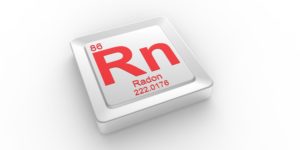
Why test for Radon?
Testing is the only way to find out if there are elevated levels of radon in a home. The EPA recommends that all homes in the U.S. should be tested as radon is the second leading cause of lung cancer next to smoking. High levels are easily fixable, at a reasonably low cost. In certain cases, during a Real Estate transaction, radon mitigation can be negotiated in the contract.
What is Radon?
Radon is an invisible, odorless gas that is a natural radioactive decay product of uranium, a common element in soil and rocks. This gas is considered harmless when dispersed in outdoor air but can be a serious health hazard when trapped in buildings. Click here for more information from the E.P.A
How Radon Enters a Home
Radon gas can seep into a home from the soil through dirt crawlspaces, cracks in the foundation and walls, floor drains, pipes and sump pumps. This harmful gas can enter any home, old or new, even those with no visible cracks. Each building is unique and the ground under the house is also unique. Two houses side-by-side can have totally different levels. The only way to know what levels are inside your home is to measure them.
The U.S. Environmental Protection Agency publishes Zone Maps to diagram the radon status of counties throughout the United States. Keep in mind that a Zone 1 rating (high potential) is not indicative of a problem, and a Zone 3 rating (low potential) does not guarantee that a home is free of radon.
To test radon, HomeTech uses professionally calibrated, continuous radon monitoring equipment for accurate results and fast turnaround times. A typical test for a will take 48-72 hours to get results. Reports will contain a 48 hour average as well as hourly readings in both a list and a graph form. Please visit the PRICING page for testing fees.

